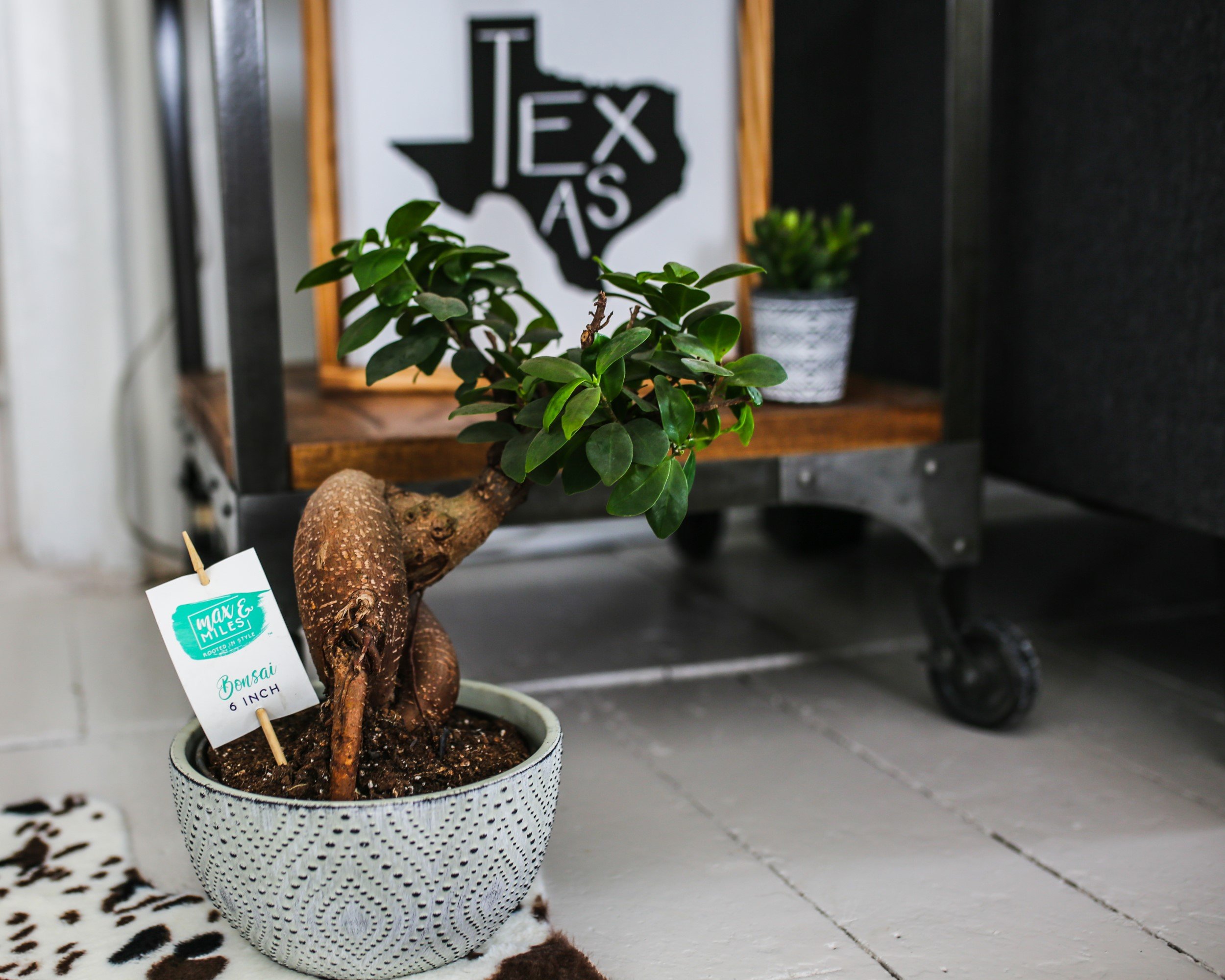All About Bonsai
There’s no arguing that bonsai trees look pretty cool! These mini trees boast odd and intriguing roots that mimic the trunk of a tree and bushy foliage that can be pruned into a cute canopy. You may have seen these attractive “trees” in your local HEB floral department or in another retailer or garden store but do you know much about these fascinating plants? From its interesting history to care and growing tips, we’re sharing all there is to know about bonsai!
The art of growing bonsai is an ancient practice dating back nearly 2,000 years. Originating in the Chinese empire and adapted with Japanese influence, the art of bonsai refers to any tree or shrub that has been made miniature by careful pruning and tying of branches to create a plant that mimics a mature tree in nature. These small trees are placed in special containers as decorative and meaningful plants. The bonsai tree meaning is often represented as a symbol of honor and prestige in Japanese culture. They are also said to bring harmony and good luck to the recipient and their home when given as a gift.
Curious about the funky roots of our Max & Miles bonsai trees? Those root formations are actually exposed ginseng roots that appear trunk-like and give each plant a unique appearance. No two bonsai trees look alike and make for perfect plant decorations in the home or office, giving any room a unique style.
If you’re wondering how to take care of a bonsai tree, no worries, although they may look complicated, they require minimal care!
Pruning
To keep its shape, prune with clean scissors any new leaf growth that is out of the general shape, or top of the tree. This helps to encourage bushy foliage and a more tree-like bonsai. You should typically prune during the growing season (March-September) but remove any brown leaves that appear throughout the year.
Light
Bonsai trees like to be located in a bright location but direct sunlight is discouraged as it can burn the bonsai’s leaves. Place your plant near a window, or outdoors on a patio, terrace, or garden. Significant changes in the sunlight can also cause bonsai leaves to drop off, so be aware of this if you are moving your tree from a very sunny spot to a darker area or vice versa.
Watering
For a bonsai planted in a 6-inch pot, put 5 ice cubes on top of your plant’s soil once a week. If ice cubes aren’t available, use about ½ cup of water.
Humidity
Bonsais enjoy higher humidity than what’s present in most homes. To increase humidity, place your plant on a humidity pebble tray or consider misting it. You could also place the bonsai in a bathroom where it will benefit from the extra humidity from your daily showers, just make sure the room gets plenty of natural light from a window.
Temperature
Common home temperatures between 65-75 degrees F are ideal for your bonsai tree. Unless you live in a tropical climate where it’s warm all year, keep your bonsai tree indoors where it will be shielded from temperatures below 55 degrees F. Also avoid locating your plant near any drafts from heaters or air conditioners in the home.
These fun and fascinating tree-like plants make the perfect gift for Father’s Day. Keep an eye out at your local HEB store leading up to Father’s Day for the perfect bonsai tree gift for dad!








